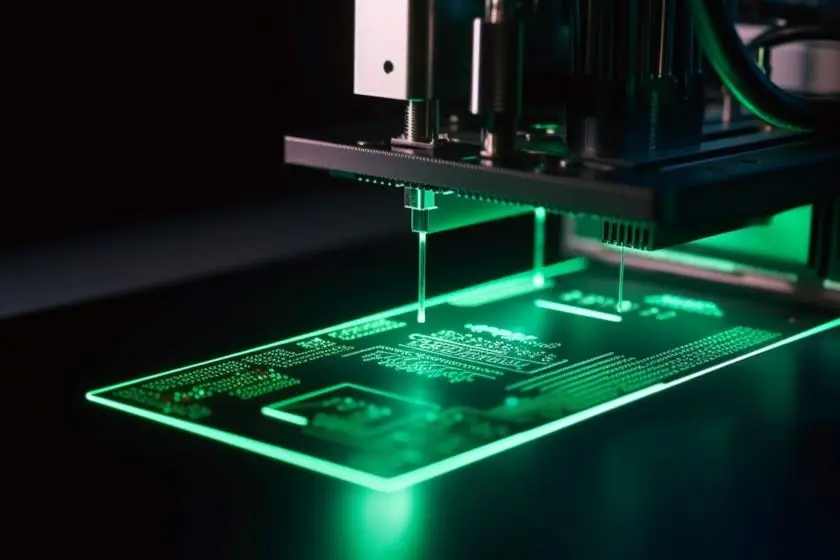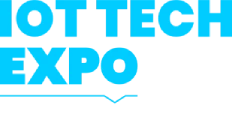連接的產品不再是附帶項目. 他們坐在核心工作流程中, 觸摸客戶, 和形狀決策. 這就是為什麼物聯網產品開發需要清晰的道路, 不猜測. 乙efore t小時e IoT software development, IoT product development 我s 一個lso 我米port一個nt. 工作跨越硬件, 韌體, 連接性, 雲, 應用, 和長期操作. It is multi‑team by nature and always iterative. Start small, learn fast, scale with care. In this 部落格, we turn a complex journey into a practical sequence. You will see what to do first, what to test early, where the real risks hide, and how to avoid common traps. We also share how 地雷 helps teams move faster without cutting corners.

What is IoT Product Development?
IoT product development is the coordinated build of a connected device and the services around it. It brings together mechanical and electrical design, embedded software, radios, cloud backends, and user applications. The target is simple to say: a device that does its job, talks to the network reliably, stays secure, and can be updated over time. The work is not linear. You define what the product must do, you test the riskiest parts with quick prototypes, you refine the architecture, then you iterate. Good teams tie every technical decision to a clear use case and cost model. Power budget shapes chip choice. Data volume shapes storage and bandwidth. Safety and privacy shape the software stack. The result is not only a device, but a system that can be manufactured, deployed, and supported at scale.
The Process of IoT Product Development
Function Requirements and Goals
Start by writing down exactly what the device must do and what it could do if time and budget allow. Think about how it senses its environment, responds to inputs, communicates with other systems, and behaves when the network is unavailable. Define hard targets for performance, 耗電量, and budget early, so design trade-offs are clear. A simple block diagram at this stage is valuable. It shows the main components, their relationships, and any bottlenecks you might face. This shared map keeps engineers, designers, and business stakeholders aligned before detailed work begins.
Marketing Research and Study
Survey both local and international markets to see what already exists. If possible, purchase similar devices and use them as a customer would. Look for strengths you might match and weaknesses you can avoid. Identify the real end users, how they set up and use products, and what they measure as “success.” Pay attention to practical constraints such as how they power devices, network availability in target locations, and limits on product size or weight. Spotting these details now helps you avoid committing to features or designs that cannot survive real-world conditions.
Proof of Concept
Before committing to full design, build a quick, low-cost prototype with development boards and ready-made modules. Focus on the riskiest parts first — the sensor accuracy, radio range, or actuator response you are counting on. Test in realistic environments, not just in the lab. Compare different component options to find the best fit. Use this stage to collect early data, uncover hidden problems, and decide which features justify further investment. A good PoC saves time and money later by showing what works and what does not before you lock in the design.
Hardware Development
Once the concept is proven, translate it into schematics and a PCB layout. Order small batches for initial assembly, then check signal integrity, thermal behavior, and power delivery under real loads. Document everything you need for scaling up: a complete bill of materials, Gerber files, programming and test points, and clear interface definitions. Expect to revise the design two or three times as testing reveals issues. Iteration here is normal and essential — each cycle should reduce risks and make manufacturing easier without drifting from the original requirements.
Develop Firmware
Firmware work can begin once the processor and critical components are fixed. Implement the basics first, then add features such as over-the-air updates, secure boot, and unique serial numbers for tracking. Lock down sensitive data in logs and memory. Develop and test the procedures for flashing firmware in production and for verifying that every unit works before it leaves the line. If your product benefits from local configuration, design a simple, secure admin interface. Keep in mind that firmware will need updates for new features and fixes long after launch.
Launch Minimum Viable Product
Produce a small initial run and deploy it to real users in the intended environment. Monitor how it performs over days and weeks — reliability, ease of installation, actual operating costs. Use instrumentation in the firmware to log problems, rather than relying only on user reports. Preserve backward compatibility so early units do not become obsolete when you make improvements. The goal is to validate the whole system, not just the device, and to collect feedback that directly shapes the next iteration.
Refine and Adjust
Use feedback from the Minimum Viable Product (MVP) phase to guide changes. Fix the bugs that stop the product from working as intended. Remove features that add complexity without solving user problems. Add only the most requested improvements to keep scope in check. Maintain a consistent update schedule so customers see steady progress. Keep checking the market and competitor landscape to make sure your adjustments keep the product competitive and relevant.
Mass Production and Deployment
Choose a manufacturing partner whose capacity, 定價, and quality processes match your needs. Supply them with complete, approved hardware and firmware packages. Define clear testing steps for incoming materials, assembly stages, and final inspection. Start with a pilot batch to verify yields and field performance before full ramp-up. 同時, prepare packaging, labeling, and device provisioning workflows so units arrive ready to do IoT implementation without extra handling.
Support and Maintenance
Plan for ongoing operation as if the product were a service. Maintain reliable OTA update systems, remote management tools, and performance monitoring. Keep installation guides and return procedures clear and accessible. Track which firmware versions are in the field to coordinate updates and fixes. Stock spare units and parts to meet service commitments. Treat security and maintenance updates as part of normal operations, ensuring the product stays safe and functional throughout its lifespan.
What are the Challenges of IoT Product Development?
Technological
Connectivity in tough environments. Security across device, transport, and cloud. Lack of universal standards for protocols and management. Turning raw signals into useful insights with clean data models. Keeping multi‑vendor parts compatible across time and versions.
商業
Scaling from pilot to thousands of units without breaking unit economics. Making devices simple to install and use for non‑experts. Handling certifications such as FCC and CE. Managing supply chain risk and long lead times. Funding ongoing software maintenance after launch.
頂部 5 Use Cases of IoT Product Development
IoT in Healthcare
Hospitals and clinics use 物聯網傳感器 to monitor medicine rooms, 設備狀態, and cold storage. Wearables track vital signs for remote care. 資產標籤 locate wheelchairs and pumps in seconds, not hours. Data flows to dashboards that alert staff when something drifts out of range. The result is better safety, fewer manual rounds, and faster response.
IoT in Agriculture
Growers monitor soil moisture, 溫度, and light to optimize irrigation and inputs. 閘道 collect data from fields with limited power and patchy coverage. Livestock tags report location and behavior so farmers can spot illness early. Insights reduce waste and water use, and help plan harvests. Rugged hardware and long battery life keep systems running all season.
IoT in Logistics
Operators track pallets, 容器, and high value goods in transit and at rest. Temperature and v我乙r一個t我on 感應器 flag mishandling before cargo spoils. Gateways at docks combine tag data with GPS for end to end visibility. Fleet data reveals fuel waste and unsafe driving. Teams move from reactive phone calls to proactive alerts and clear proof of condition.
IoT in Office
Workplaces monitor occupancy, 空氣品質, and energy use to run smarter spaces. 信標 和 s米一個rt badges support wayfinding and access control. Meeting rooms show live status to cut booking conflicts. Temperature and CO₂ data guide HVAC tuning that saves energy without hurting comfort. Facility teams get real time views instead of walking floors to check.
IoT in Factory
Production lines use sensors for machine health, 振動, 和溫度. Early warnings enable planned maintenance and reduce downtime. Asset tracking shortens search time for tools and parts. Safety buttons and geofencing improve worker protection. Data feeds into MES or simple dashboards so managers act on facts, not guesses.
Core Requirements in IoT Hardware Development
安全
Design for security at the start. Use secure boot, signed firmware, and unique device identities. Protect data at rest and in transit. Limit debug access in production units. Plan regular updates so fixes reach the field quickly and safely.
成本
Set a target bill of materials and design to it. Avoid over‑spec parts that add cost without measurable benefit. Consider assembly steps and test time. Optimize packaging and logistics so the total landed cost supports the business case.
力量
Match the power budget to the duty cycle. Choose radios and sensors with low idle draw. Use deep sleep and efficient wake patterns. Validate battery life with real traffic and temperatures. Ensure power delivery is stable during peaks.
Reliability and Maintainability
Design for harsh reality. Add Electrostatic Discharge (ESD) and surge protection where needed. Use components with long lifecycles. Provide test points and clear diagnostics. Make field replacement and updates simple so downtime stays low.
連接性
Pick the radio for the job. Wi‑Fi for dense indoor networks, cellular for wide area, Bluetooth for local interactions, LoRaWAN for long range low data. Test antennas in final enclosures. Plan fallback paths so devices remain reachable.
Why Develop IoT Devices with Minew
地雷 brings deep hardware expertise and real deployment experience. We have shipped more than 300 million devices worldwide and have over 18 年 of experience in wireless design. Our portfolio spans 藍牙, 洛拉萬, 細胞的, Wi‑Fi, 超寬頻, 全球定位系統, 和 satellite communication technologies. Teams choose us for fast prototyping, reliable supply, and thoughtful customization across asset tracking, personnel safety, 和環境監測. We c一個n help you move from idea to scale with confidence.


 立即聊天
立即聊天